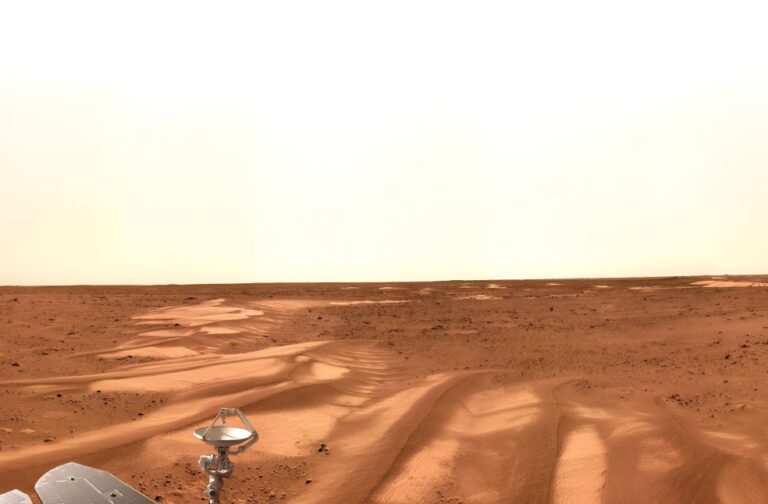Pennsylvania: Mars, known for its barren landscape and harsh radiation, may have once featured sandy shorelines, according to new research. Scientists examining subsurface imaging from China’s Zhurong rover have identified buried beaches, adding weight to the long-debated theory that the Red Planet once had vast oceans.
Published in the Proceedings of the National Academy of Sciences, the study underscores findings from the southern Utopia Planitia region, where paleoshorelines had previously been mapped using satellite data. Ground-penetrating radar detected sediment features sloping toward the northern lowlands, comparing Earth’s coastal formations.
Dr. Benjamin Cardenas of Penn State University stated that, “The beach appears to have shifted over time, growing at least 1.3 km into the ocean. This suggests the existence of tides, waves, and a nearby river supplying sediment—key factors for supporting an aquatic environment.”
The team ruled out volcanic, fluvial, or wind-driven origins for the formations, reinforcing the likelihood of an ancient Martian shoreline. The discovery also holds importance for astrobiology, as shorelines are prime locations for studying early life.

Cardenas stated that, “A beach is a dynamic interface between water, land, and air—just like the environments where life first appeared on Earth. It would be an excellent target for future missions searching for signs of past life.”
Despite its potential for habitability in the past, the Martian beach would have been vastly diverse from those on Earth—lacking palm trees, wildlife, and likely experiencing frigid temperatures. Still, researchers say the discovery provides valuable insight into Mars’ ancient climate and geological history.



